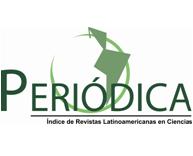BIO-POWER GENERATION FROM ANAEROBIC TREATMENT OF DISTILLERIES VINASSES IN UASB REACTORS
Keywords:
Distillery vinasse treatment, anaerobic digestion, bioenergy production, biogas, UASB reactors, prefeasibility studyAbstract
Anaerobic digestion processes are widely used for wastewater treatment, so we show their advantages and disadvantages as well as the treatment of the most aggressive effluents from alcohol industry (distillery vinasses) in anaerobic UASB reactor (Up Flow Anaerobic Sludge Blanket), which treats the residual biologically in one side, and produces biofuel as a way to overcome two major problems: water pollution and energy failure. In this way, the work objectives are: to provide an overview of the advantages and applicability of anaerobic treatment of distilleries vinasses in UASB reactors for biogas production with energy purposes, and to demonstrate the economic viability of the biogas production technology to convert it into electrical power. The paper performs a study case in order to demonstrate the economic viability where 800 m3/d of vinasses are treated and 13 070 m3 of biogas/d are produced, for a daily electricity generation of 22 220 kW and 4, 70 t/d of fertilizer sludge. The economic feasibility is evaluated using the economic analysis software "COMFAR III EXPERT" applied to the sales of certified emission reductions (CERs) according to Kyoto Protocol. The results show the feasibility with an NPV to 10% of $ 4325947,14, an IRR of 22,57 and a recovery period of 5,77 years, being the costs of raw materials the most affecting on the unit costs of 0,39 Total Currency/m3 of biogas.




















